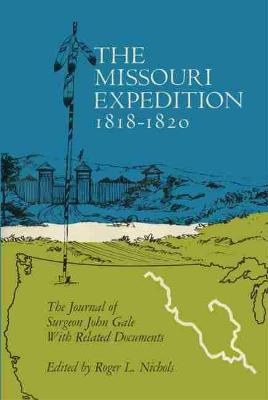American Exploration and Travel
1 total work
Repeated clashes between American fur traders and the Plains Indians following the War of 1812 lent urgency to demands that the United States government protect its territory in the West. To remedy the situation, Secretary of War John C. Calhoun planned a military occupation of the upper Mississippi and Missouri River valleys through a cordon of army posts stretching from Green Bay on the Great Lakes west to Montana. Calhoun projected a troop movement, called the Yellowstone Expedition, that grew from one expedition to three - the Missouri, the Mississippi, and the Scientific Expeditions. The Missouri Expedition, described in this volume, was the first venture to implement Calhoun's plan.
During the summer of 1818 the expedition, under the command of Colonel Thomas A. Smith, traveled up the Missouri River in keelboats to Cow Island, near present-day Fort Leavenworth, Kansas, where a winter camp was built. Defiant bands of American Indians robbed the soldiers of horses, guns, boats, and food, also attacking white traders and messengers along the river. In February 1819, Calhoun appointed Colonel Henry Atkinson, the most experienced officer of the Rifle Regiment, to the command. By summer the troops continued upriver to Council Bluffs, where they built Cantonment Missouri.
Expedition surgeon John Gale's account of the Missouri Expedition captures the color and excitement of exploration while revealing the grinding effort and stark hardship of army life in the early nineteenth century. Editor Roger L. Nichols, who established the authorship of the journal, includes expedition letters and military orders to enhance Gale's authentic narrative.
During the summer of 1818 the expedition, under the command of Colonel Thomas A. Smith, traveled up the Missouri River in keelboats to Cow Island, near present-day Fort Leavenworth, Kansas, where a winter camp was built. Defiant bands of American Indians robbed the soldiers of horses, guns, boats, and food, also attacking white traders and messengers along the river. In February 1819, Calhoun appointed Colonel Henry Atkinson, the most experienced officer of the Rifle Regiment, to the command. By summer the troops continued upriver to Council Bluffs, where they built Cantonment Missouri.
Expedition surgeon John Gale's account of the Missouri Expedition captures the color and excitement of exploration while revealing the grinding effort and stark hardship of army life in the early nineteenth century. Editor Roger L. Nichols, who established the authorship of the journal, includes expedition letters and military orders to enhance Gale's authentic narrative.
